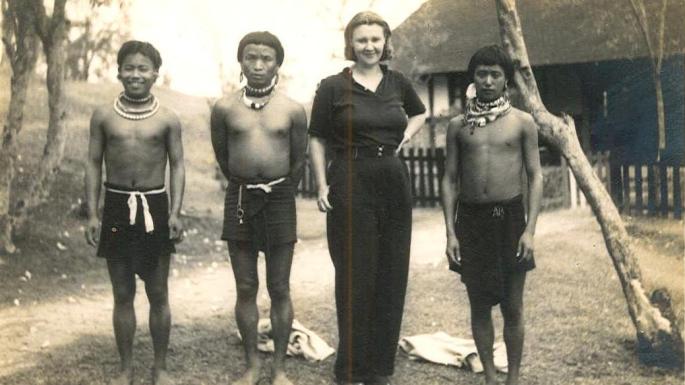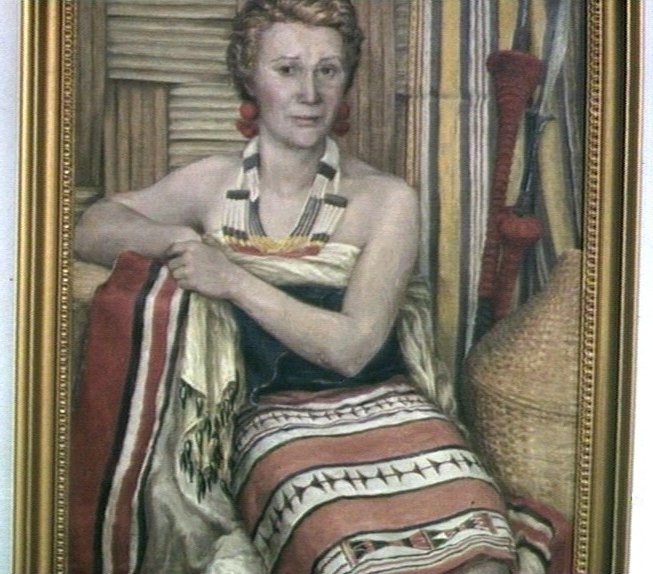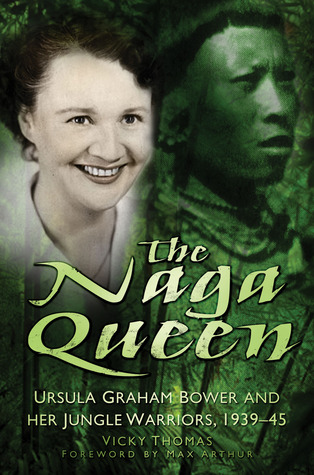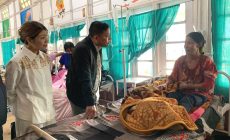NAGA REPUBLIC Feature —
In 1942, the Japanese army invaded Burma and threatened to move into India. Suddenly, the security of the North-East of India became of utmost strategic importance to the British Empire. On the instructions of the British administration, in early 1942, Ursula Graham Bower, popularly known as the ‘Naga Queen’, formed a band of scouts made up of trained Naga tribes backed by a special guerrilla troop called “V Force” to comb the thick jungles of Assam against the Japanese Army.

Ursula Graham Bower, known as the Naga Queen, commanded patrols and led ambushes in the jungle against the Japanese (Photo source—The Times)
As Time magazine in its story ‘INDIA: Ursula and the Naked Nagas’ dated January 01, 1945, points out, the half-naked tribesmen from North Eastern India were directed by a white woman: pert, pretty Ursula Graham-Bower, 30, an archaeology student who looks like a cinema actress.
Leading a band of 150 Naga hillmen with ancient muzzle-loading guns, she trekked over 800 square miles of mountainous jungle infested with mosquitoes. General Slim, a British army officer recognised her work and supported her with arms and reinforcements. The “Bower Force” as her group came to be known, was active and knowledgeable in guerrilla warfare and proved very useful.
Her work in this crucial time among the Nagas won her the Lawrence Memorial Medal in 1944, and the title of the Member of the Order of the British Empire was bestowed on her for her work in Burma in 1945.
How it began—The story of Ursula Graham Bower
“It all began in 1937 when, as a girl of twenty-three, I was on a visit to India.” This line in the first chapter of her book, The Naga Path fills the reader with great anticipation and the story itself does not fail to deliver.
It sounds innocuous enough, but little did Ursula Graham Bower know that this touristy trip to India would be the beginning of not only the adventure of a lifetime for her but also make a life-changing impact on an entire people- the Nagas!
And as she puts it, her ordinary winter visit to India was taking unexpected turns. Her first sight of the Nagas stirred in her a sudden surge of recognition, a kind of déjà vu, a feeling she could not fully comprehend. This initial connection led to a lifetime of friendship and oneness with the Nagas, a relationship which withstood even the rigours of war.
The shift from an outsider to an insider took time, no doubt. Circumstances forced the bonding sometimes. Despite outward dissimilarities, Ursula was uniquely suited for life in the Naga areas. For one, she knew how to use a gun. Her father, Commander John Graham Bower taught her how to shoot. She also had some medical skills and helped villagers with first aid. She was an avid photographer, and also wanted to write a book.

All these life skills serendipitously made her capable of taking care of the sick, while photographing and documenting the natives’ lifestyles. Above all, it qualified her to lead a band of guerrillas against the Japanese invaders during World War 2.
So how did a young girl with not much ambition or ‘speciality’ end up living such an extraordinary life? To begin with, she did not come to the Naga Areas as a government official. Though later, her services (due to her close association with the Nagas , she knew the people and the jungles very well) were utilised by J. P.Mills and later, the British army. And these stints were purely circumstantial.
In fact, her first visit to India was at the invitation of her friend Alexa MacDonald whose brother worked in the Indian Civil Service in Imphal. Ursula’s mother hoped that she would meet a suitable husband on this trip. So we cannot attribute imperialistic ambitions to her interest in the Nagas. Neither did she have proselytizing tendencies. During the middle of the war, the war hero of the Burma campaign, General Slim, on meeting her is said to have announced, “Thank God, I thought you’d be a lady missionary with creaking stays.”
With neither God nor Kingdom as her driving motivation, we can safely conclude that it was her love for, and affinity with the Nagas that made her stay on and risk her life for them.
She had already been living with the Nagas for five years when WW2 broke out. By then, she had already gained their trust by helping them procure government aid during famine thus saving many lives. She also gave them medicines. She had already started documenting the Nagas as an anthropologist (though she had no formal training then), taking thousands of pictures. They returned the favour by giving her the status of a demigod and reposed complete faith in her.
So where can we place Ursula in Naga history?
Interestingly, Nagas traditionally did not allow women to take part in war. It was one of the domains, apart from politics and hunting, considered taboo for women. The fact that they not only allowed her to fight, but followed her leadership with utmost loyalty speaks volumes of the esteem in which they held her.
The Nagas believed her to be a re-incarnation of the prophetess Rani Gaidinliu, of the Heraka religion, followed by a section of the Zemes among whom she stayed for years. Ursula, however, did not cater to this belief and tried her best to debunk the theory. Ursula herself states that the men treated her as one of them because they applied the “Joan of Arc Principle” with her. That is, they did not consider her “quite entirely a lady”.
Courage is a much revered quality among the Nagas , and this, she had in plenty. She claims that the Nagas were extremely loyal, not to her, but to the British Sarkar, and cites instances of Nagas laying down their lives for the Crown in an interview with the anthropologist and historian Alan MacFarlane.
Temsula Ao, a pioneering Naga scholar, in her essay, “Gender and Power- Women Centred Narratives from Ao- Naga Folklore”, writes that “it would be difficult to find accounts of warrior like heroines in Naga lore because in Naga society, women are debarred from taking up weapons of warfare. Nor would there be any queens in the lore because in the patriarchal society of the Nagas, the concept of a woman ruler would be untenable.”

Ursula broke the ‘thatch roof ceiling’ for women by not only leading a group of warriors to war with a sten gun in hand, but also came to be known as the “Naga Queen.” Not too bad for a girl who had to give up her initial dream of studying Archaeology in Oxford because of financial constraints.
Surely, such path-breaking exploits brought on by a never-say-die attitude deserve more recognition from the Nagas. In fact, a biopic on this iconic figure would be great!
And yes, she did meet a suitable husband, Lt. Col. Frederick Nicholson Betts when he was serving in “V Force” in Burma in 1945. They worked together in Burma. But that is another story for another day. Born in England, May 15, 1914 Ursula passed away on November 12, 1988, aged 74.
With inputs from The Naga Path, Time magazine and an interview with historian Alan MacFarlane







 What Does Your Face Say About Your Health?
What Does Your Face Say About Your Health? The Top Viral YouTube Videos of 2017
The Top Viral YouTube Videos of 2017 An orbiting message of peace
An orbiting message of peace Meet R.N. Ravi, who is mediating peace with the Nagas
Meet R.N. Ravi, who is mediating peace with the Nagas










1 Comment
Nkuilung Daime
January 2, 2018 - 10:14 amI want to know about naga